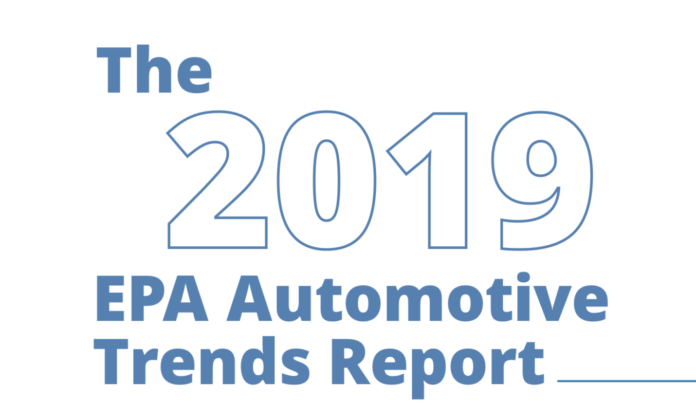The U.S. Environmental Protection Agency (EPA) has released the 2019 Automotive Trends Report, which provides the public with information about new light-duty vehicle greenhouse gas (GHG) emissions, fuel economy, technology data and auto manufacturers’ performance in meeting the agency’s GHG emissions standards.
One of the report’s most significant findings is that new-vehicle estimated real-world CO2 emissions are at a record low, and fuel economy is at a record high. The CO2 emissions and fuel economy data in the report fall into one of two categories. The first is compliance data, which is measured using laboratory tests required by law for CAFE and adopted by the EPA for GHG compliance. The second is estimated real-world data, which is measured using additional laboratory tests to capture a wider range of operating conditions that an average driver will encounter.
The EPA has collected data on every new light-duty vehicle model sold in the U.S. since 1975, either from testing performed by EPA at the National Vehicle and Fuel Emissions Laboratory in Ann Arbor, Mich., or directly from manufacturers using official EPA test procedures.
The data is collected to support several important national programs, including EPA criteria pollutant and GHG standards, the U.S. Department of Transportation’s National Highway Traffic Safety Administration (NHTSA) Corporate Average Fuel Economy (CAFE) standards and vehicle Fuel Economy and Environment labels. The data set allows the EPA to provide a comprehensive analysis of the automotive industry over the last 40 plus years.
All data in the report for model years 1975 through 2018 are final and based on official data submitted to EPA and NHTSA as part of the regulatory process. In some cases, the report shows data for the model year 2019, which are preliminary and based on data provided to EPA by automakers prior to the model year. Preliminary data is not shown for manufacturer compliance. The report does not examine future model years and past performance does not necessarily predict future industry trends.
To read the EPA’s full 2019 Automotive Trends Report, click here.






